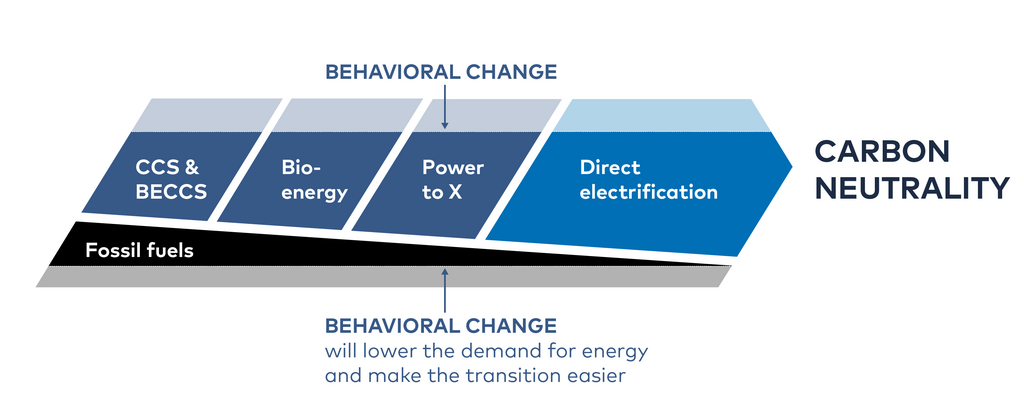
The Five solution tracks
Solutions available to decarbonise the Nordic energy system can be grouped into five tracks: direct electrification; PtX; bioenergy; carbon capture and storage (CCS); and behavioural change. A balance between these…
Solutions available to decarbonise the Nordic energy system can be grouped into five tracks: direct electrification; PtX; bioenergy; carbon capture and storage (CCS); and behavioural change. A balance between these must be found, in terms of technical, economic, and social viability.

Direct electrification – the “Central Pillar of Decarbonisation“
With falling renewable electricity costs, increasing end uses and an extensive grid, direct electrification can enable a carbon neutral Nordic energy system.
Read more about direct electrification, the “Central Pillar of Decarbonisation” in chapter 3 here
Power-to-X – A Potential Game Changer for the Power Sector
While using power to produce fuels can help supply fossil free energy for applications that are difficult to electrify, “PtX” faces competition in the Nordics, where biomass and CO2 storage sites are abundant.
Read more about Power-to-X, a “Potential Game Changer for the Power Sector?” in chapter 4 here
Bioenergy – An important but shifting role
Use cases for biofuels in the Nordic energy system will likely shift from power and heat towards fuels for transport and industry up to 2050. With similar properties to fossil counterparts, biofuels are one of few alternatives for heavy freight and aviation.
Read more about Bioenergy, an “An important but shifting role” in chapter 5 here
Carbon Capture and Storage – Negative Emissions are Essential
It is difficult to imagine a path toward net zero emissions without the use of carbon capture and storage. The importance of CCS technologies is reflected in Nordic national climate targets.
Read more about Bioenergy, an “An important but shifting role” in chapter 6 here
Behavioral change – Behaviour and Acceptance Influence Future Energy Systems
The transition to a carbon neutral Nordic energy system requires new technology and infrastructure, as well as social acceptance and behaviour change, to ease the impacts of emission reductions across different sectors and lower overall costs.
Read more about Behavioral change, how “Behaviour and Acceptance can Influence the Future Energy Systems” in chapter 7here


